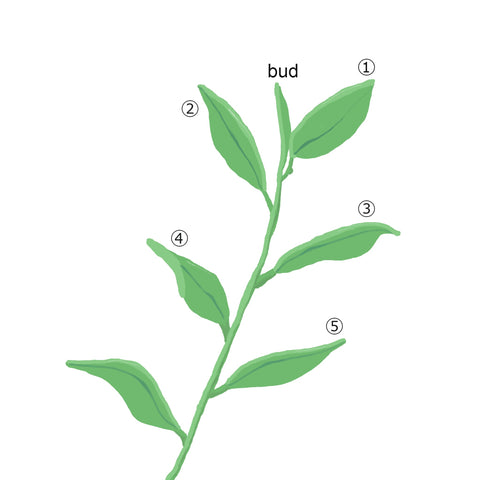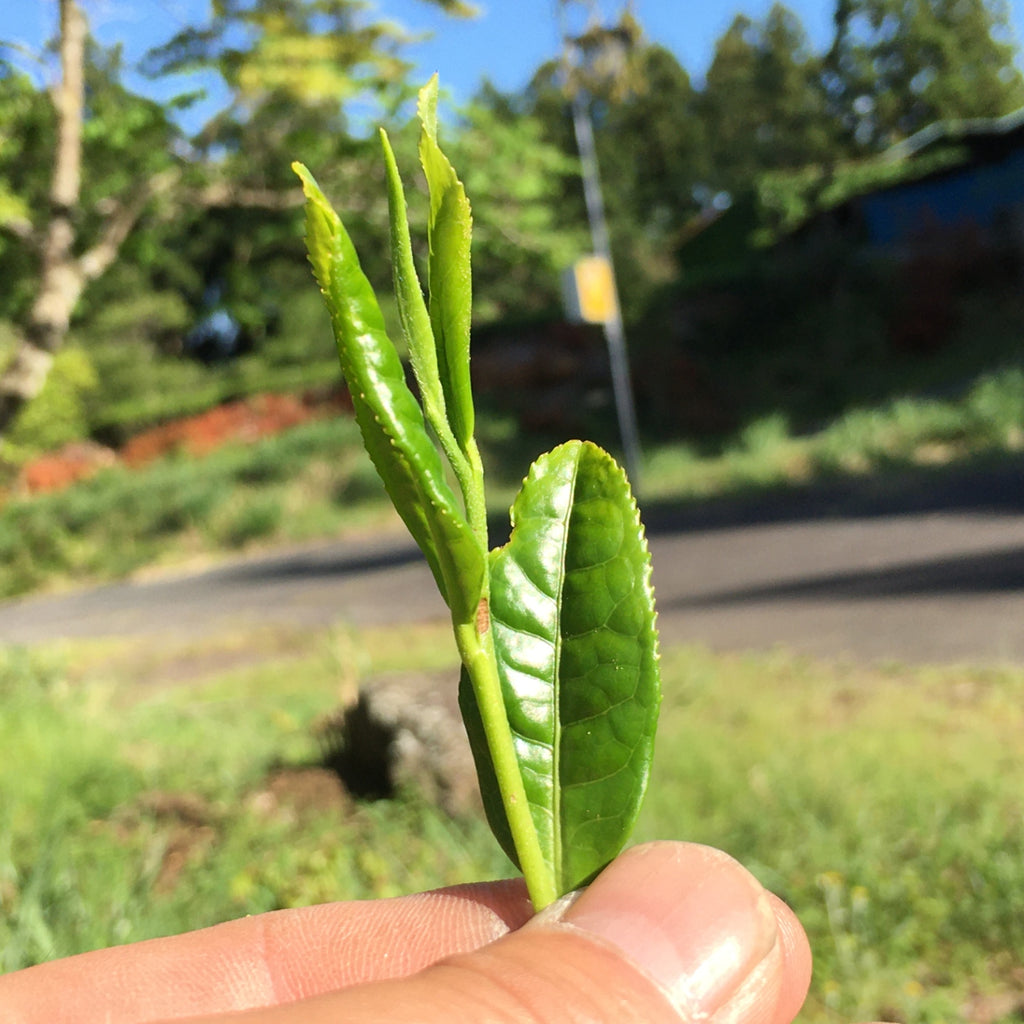Japanese tea has the terms, first flush (Ichibancha, 一番茶) and second flush (Nibancha, 二番茶). It is a term that refers to the harvest time of tea, but it also serves as an indicator of quality and other factors. This article focuses on the first flush tea.
1. What is Ichibancha (First Flush) ?
First flush is the tea leaves that were first harvested that year. The tea tree does not sprout from the fall of the previous year to the spring of the following year. Like most plants, it withstands the cold winter months and does not produce delicate sprouts. Meanwhile, the tea tree keeps storing nutrients inside. When spring comes and the temperature is above a certain level for several days, it starts to sprout. Since Japan's land is long vertically, Sprout starts in the early and middle of March in the southern region like Okinawa and Kyushu, in the middle and late March in Kansai (Kyoto and its neighboring prefectures), and later in colder regions. Of course, the timing changes depending on weather and rainfall. After that, the tea tree grows new shoots.
Isshin Goyo (一芯五葉), literally means one bud, five leaves. It describes that the tea tree has one small, unopened leaf at the top of the tea bud, with five leaves underneath. At this level of growth, it is time to harvest the optimal in quality and quantity. This is the first flush of that year and it’s called "Ichibancha".

2. Quality of the first flush
The first flush green tea is the best in quality in the year, since the nutrients stored by the time spring arrives are most highly concentrated inside the tree. So most of the ceremonial grade matcha use the first flush tea. Also, gyokuro, where sweetness and umami are as important as matcha, is harvested during the first flush timing only.
Generally,tea leaves can be harvested in the second and third flushes followed by the first flush, but the more harvested, the less nutritious the tea trees contain for the next year’s harvest.
Even if fertilizer is increased, there is a limit to the amount of absorption. Therefore, tea farmers usually harvest the first flush only for gyokuro in order to maximize the nutrients left within the tree which enables the next year’s gyokuro to keep high quality.
3. Shincha – the first harvest during the first flush
Shincha means the first harvest during the first flush season. There is no clear definition of “shincha”, so there may be some variances in the quality and timing of selling teas saying “shincha” depending on stores. However overall, flavor of shincha is described as strong body, which is close to the full-bodied wine. Also shincha has it’s unique scent called “mirume-ka”. The main aroma elements of mirume-ka is leaf alcohol (cis-3-Hexenol). The scent is powerful, stimulates noses a bit. (No worries it’s different from alcohol that makes people get drunk.)
Also, in most regions, sencha comes first as shincha even if gyokuro or matcha is also grown there. Why? The growth of sprouts will be faster the more photosynthetic they are, as in other plants. As Sencha is not shaded and has more exposure to photosynthetic, it is harvested earlier than gyokuro which is shaded before harvesting. That's why sencha comes first as shincha as it is first harvested during the first flush period in most regions. Such shincha has rich sweetness as nutrients are stored during the winter period.
Shincha also has much impact on the quality of the second or third flush followed by the first flush. So everyone in the Japanese tea industry become fidgeting when it comes to the time of shincha season.

